I. What are the Various Cells of the Nervous System?
Wait, I thought it was just the neurons that comprised the nervous system — those cells that tell us what to do? Well, it certainly surprised us when we were first learning this that there are more cells that are involved in the functioning of our nervous system.
Just like a well-orchestrated pit crew on an F1 team or an in sync basketball team, the various cells of the nervous system interact together in order to ensure the proper functioning of the nervous system. Lets go ahead and take a look at these cells and their important functions!
II. Main and Support Cells
We’ll divide the discussion about the nervous system cells into 2 categories: an in depth discussion on neurons and a more broad discussion of the glial, support cells!
A. Neuron: The Center Piece
It goes without saying that the neurons are the main cells of the nervous system as they’re involved in the transmission of neural signals that eventually results in much of the autonomic functioning of the body — let’s take a closer look at main structures of the neuron as shown below!
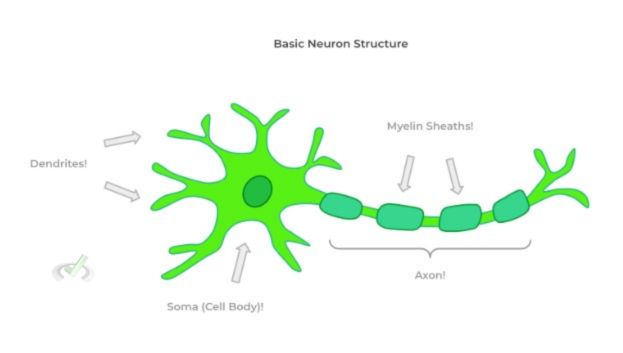
Starting from the left, there are cellular processes that extend from the central part of the neuron called dendrites — these are responsible for receiving incoming stimuluses coming from the preceding neurons to determine whether an action potential can be generated!
These incoming stimuluses come from the neurotransmitters which were released from the preceding axon terminals into the synapse! These then bind to receptors on the dendrites which determines whether an action potential can occur!
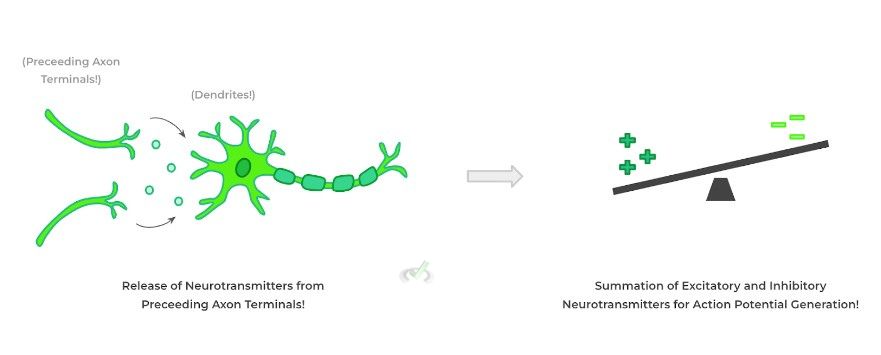
The protuberant part of the neuron where the dendritic processes extend from is called the soma, also known as the cell body — this is the portion of the neuron which contains all the necessary organelles and cellular components that allow for the proper neuron functioning.
Because it contains all the cellular organelles (i.e. mitochondria, Golgi apparatus, ribosomes, etc.), many important cellular processes occur here such as RNA transcription, protein production, etc. This is important because the synthesis of neurotransmitters occurs here at the soma!
Neurotransmitters are then sent down the axon within vesicles that move via motor proteins kinesin and dynein — specifically, kinesin moves vesicles with newly synthesized neurotransmitters down the axon to be released while dynein returns empty vesicles towards the soma.
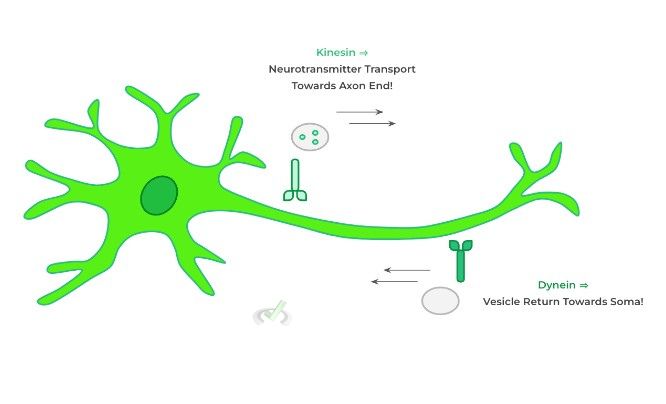
The long, singular cellular extension from the soma is called the axon which has the important role of transmitting the action potential towards the end of the neuron called the axon terminal.
This is the location where all the vesicles containing the neurotransmitters are located and can be released upon stimulation via the propagated action potential.
Also shown are the myelin sheaths which are lipid rich insulating coverings around the axon. These are crucial as they are responsible for insulating the action potential as it propagates down the axon so that it arrives at the axon terminal with the same (or near to) the same strength.
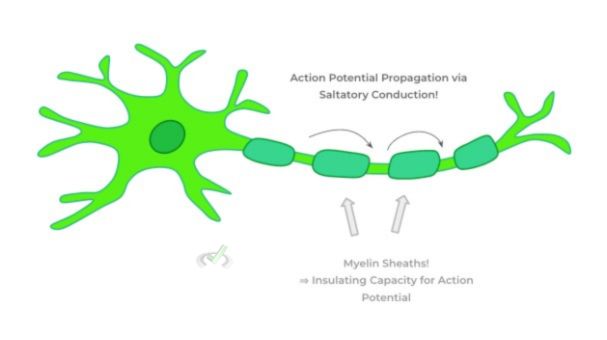
Without this insulating capacity, the action potential would be propagated much slower and would lose much of its strength before it’d even reach the axon terminal.
In addition, the myelin sheaths also allow for action potential propagation via a specific mechanism called saltatory conduction, which is discussed in much more detail in our action potential article!
B. Glial Cells: The Supporting Cells
The word glial actually comes from the Greek word meaning “glue”, kinda hinting to the fact that these cells “glue” the function of the nervous system together due to their supportive role! Let’s go ahead and look at some of these main cells!
I. Astrocytes
By far, astrocytes are the most abundant glial cells of the nervous system! Though they have many roles, they have a primary function in maintaining the integrity of the blood brain barrier!
This refers to the complex set of blood vessels which are very selective in regards to what substances can cross from the blood into the parenchyma of the brain.

In addition, these cells also have functions in recycling neurotransmitters and promoting new synapse formation between neurons!
II. Oligodendrocytes and Schwann Cells
It’s important to note that both of these cells have the same function in producing the myelin sheaths for axons! However, another important thing to note is that they differ in their location:
Oligodendrocytes myelinate the axons of the central nervous system while Schwann cells will myelinate the axons of the peripheral nervous system!
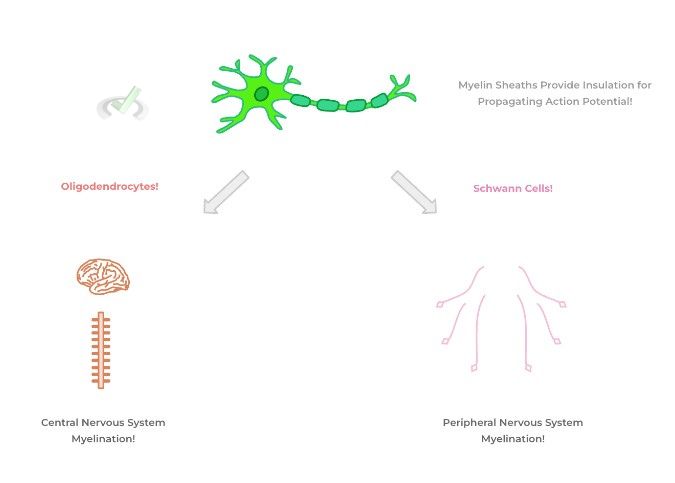
III. Microglia
Think of these cells as essentially the resident tissue macrophages of the central nervous system — though small amounts of these cells have also been found to be present in the peripheral nervous system as well!
Similar to other resident tissue macrophages like Langerhans and Kuffner cells, microglia help clear cellular debris as well as allow for antigen presentation in order to stimulate an immune response should infection be present!
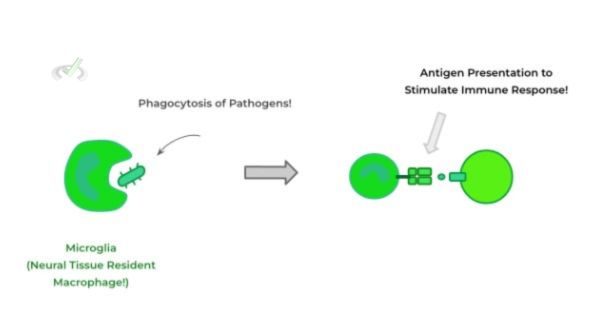
IV. Ependymal Cells
Finally, the ependymal cells are responsible for producing the cerebrospinal fluid which is an important fluid of the CNS which helps in nutrient delivery, waste removal, and cushioning of the CNS — specifically, the cuboidal ependymal cells line the ventricles of the brains!
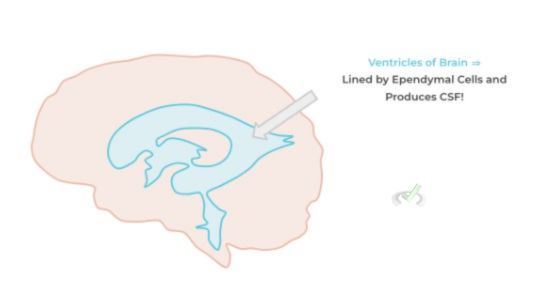
III. Bridge/Overlap
We discussed how one of the main support cells of the nervous system was the microglia which functions as the resident tissue macrophage of the nervous system! Let’s go ahead and review some of the other resident tissue macrophages throughout the body!
I. Other Examples of Resident Tissue Macrophages
Recall that macrophages are a special type of antigen presenting phagocyte as they mostly reside in the body’s tissue and don’t really re enter circulation unlike the constantly circulating neutrophils!
While we were discussing microglia as the main tissue macrophage for neural tissue, there are some many other examples throughout the body!
There are the Kupffer cells which are the tissue resident macrophage of the liver, the osteoclasts which reside in bone tissue, and the Langerhans cells which are present in the stratum spinosum of the epidermis!
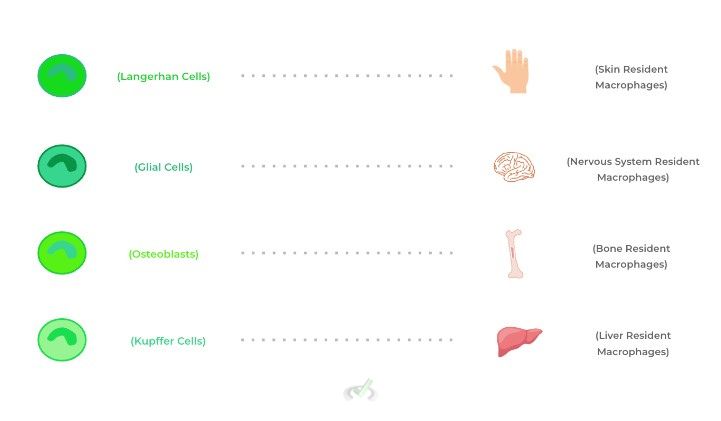
IV. Wrap Up/Key Terms
Let’s take this time to wrap up & concisely summarize what we covered above in the article!
A. Neuron: The Center Piece
The neuron is the main cellular constituent of the nervous system as it allows for the transmission of neural information, via electrical signals and neurotransmitters, which ultimately allows the body to function.
The neuron receives incoming signals from other neurons via dendrites and determines whether the signal is sufficient to initiate an action potential! The soma, or cell body, is the round, bulbous portion of the neuron which contains all of the necessary cellular components (i.e. nucleus, proteins, mitochondria) to allow for proper cellular functioning.
The neuron also contains axons, which are long, cellular extensions from the soma which are responsible for propagating an action potential. Wrapped around these axons are myelin sheaths which help to insulate the propagating action potential!
B. Glial Cells: The Support Cells
As mentioned above, the glial cells function primarily to support the neurons of the nervous system to ensure smooth functioning!
I. Astrocytes
These are by far the most abundant support cells present in the nervous system! They have many roles including maintaining the integrity of the blood brain barrier, recycling old neurotransmitters, and stimulating new synapse formation!
II. Oligodendrocytes and Schwann Cells
Both of these cells have a similar function as they are both involved in myelin production of the axons; however, they differ in their location.
Oligodendrocytes are responsible for myelinating the axons within the central nervous system while Schwann cells are responsible for myelinating those in the peripheral nervous system.
III. Microglia
Similar to Langerhans cells and Kupfner cells, microglia are resident tissue macrophages of the nervous system which work to clear cellular debris and present antigens to stimulate an immune response!
IV. Ependymal Cells
These cells, which line the ventricles of the brain, allow for the production of the cerebrospinal fluid. The cerebrospinal fluid has many functions including cushioning and nourishing the brain as well as getting rid of toxins!
V. Practice
Take a look at these practice questions to see and solidify your understanding!
Sample Practice Question 1
Pelizaeus-Merzbacher disease is characterized as an X-linked neurological condition where there’s decreased neural control due to demyelination of the central nervous system. Specifically, it’s caused by the damage to the cells responsible for myelination. Which cell is likely affected and what part of the neuron is likely to be unmyelinated?
A. Schwann Cells, Dendrites
B. Schwann Cells, Axon
C. Oligodendrocytes, Axon
D. Oligodendrocytes, Dendrites
Ans. C
Recall that the oligodendrocytes are glial cells responsible for the myelination of axons in the central nervous system! Myelin is crucial due to its insulating capacity which allows for the propagation of the action potential!
Sample Practice Question 2
A researcher wants to study the gene activity of a neuron via qRT-PCR which requires utilizing RNA transcripts as a template. Which of the locations would most likely have the sufficient amount of transcripts to measure the activity?
A. Axon
B. Dendrite
C. Axon Terminal
D. Soma
Ans. D
Recall that the soma, or the cell body, is the bulbous portion of the neuron that contains all the necessary cellular organelles which are important for cellular function.
Being that RNA transcription most likely occurs in the soma, this is where the RNA transcripts would be most abundant!







 To help you achieve your goal MCAT score, we take turns hosting these
To help you achieve your goal MCAT score, we take turns hosting these 





















 reviews on TrustPilot
reviews on TrustPilot